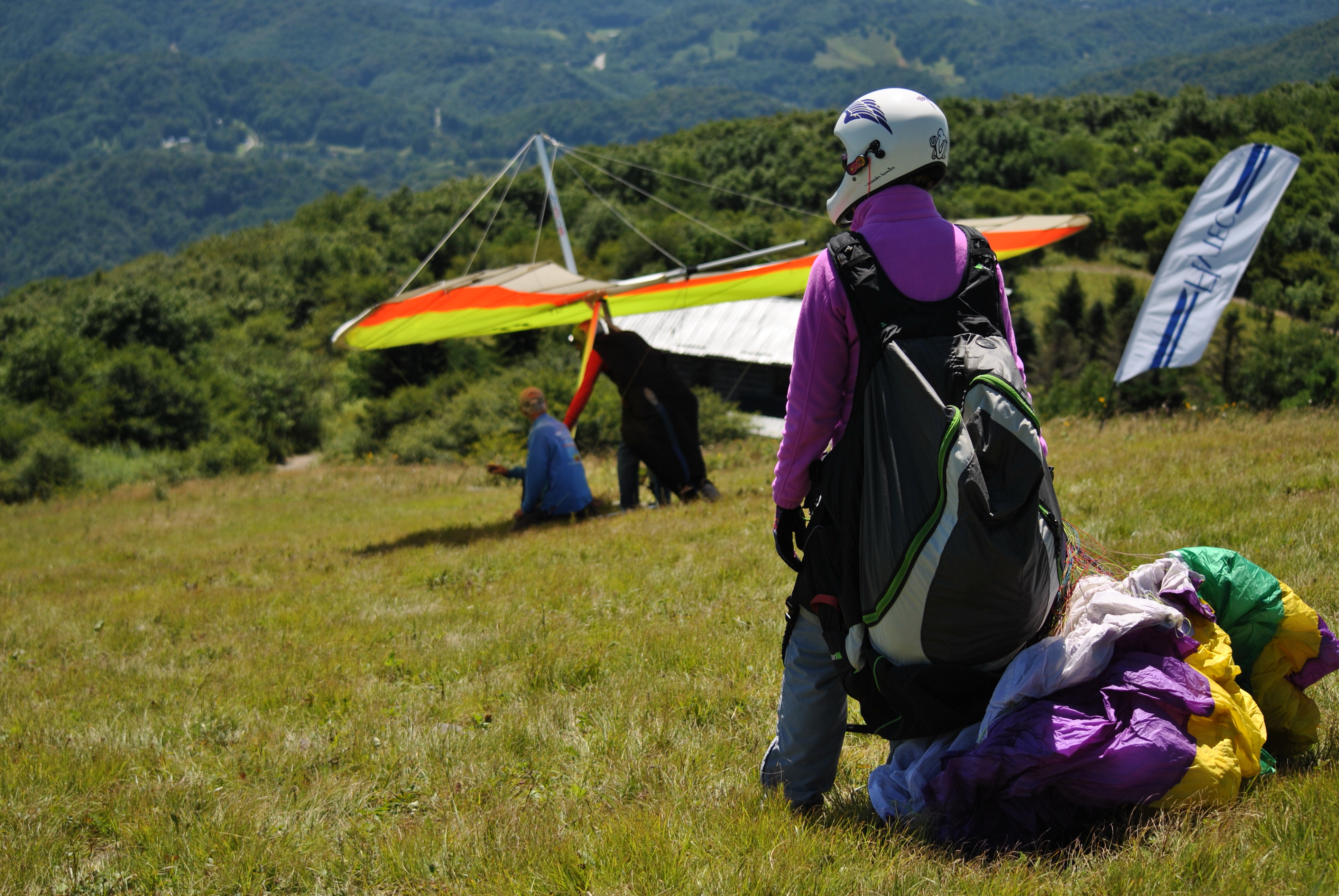
Gaining access to new flying sites, and most importantly, maintaining that access, is dependent on good relationships with landowners - an ongoing process requiring a lot of effort from the local flying community. Presented here are a number of resources to use in establishing and maintaining strong working relationships with landowners for access to properties suitable for launches, landing zones, or other free flight functions.
If you have any questions about a new or existing site, insurance, site support, landowner or government relations, or anything, please don't hesitate to contact either the USHPA office at [email protected] or the chair of the Chapter and Site Development Committee at [email protected].
Site Management Guide
Updated 11/18/2020
*Please note that nothing in this guide should be construed as legal advice or guidance, or an indication of insurance coverage or liability. This guide is intended as an introduction to the potentially complex topic of managing sites and working effectively with landowners. If you have questions on the specifics of insurance coverage, liability, or legal arrangements, please contact the USHPA office or consult a lawyer.
Click to expand each section of the guide below.
Introduction to Landowner Protections
This guide is intended to provide a starting point for discussions with a landowner whose property may be involved as a launch, LZ, or otherwise in your pursuit of free flight. A good relationship with the landowner can make all the difference when you want to gain access to a new flying site or maintain an existing one. Landowners have no reason to be accommodating to free flight enthusiasts looking to use their property or the land they manage. To improve the relationship, consider inviting them to pilot gatherings, sending them a holiday card, or offering to help with improvements to their property. Since our sports rely on having places to launch and land, making a landowner happy and comfortable with gliders at their property should be pilots' first and last consideration.
Your relationship with your landowner is key to making and keeping the landowner happy and comfortable with flying activities on their property.
Many landowners have a concern for their potential liability to pilots and spectators in the event of a flying incident. USHPA realized this concern back in the 1970s at the birth of the sport and has been working tirelessly to provide ways of protecting landowners from that sort of liability.
The Protection of FAA Regulations, Part 103
FAA Regulations, Part 103 allows us to fly hang gliders and paragliders without Federal licensing, Federally mandated training, certification or equipment certification. The existence of Part 103 is a legacy of the relationship forged by USHPA with the FAA in the early days of our sport. Our predecessors had the foresight to envision a world of flight with only minimal governmental restrictions. In trade for minimal restriction, every pilot takes personal responsibility for their own safety.
"Part 103 is based on the assumption that any individual who elects to fly an ultralight vehicle has assessed the dangers involved and assumes personal responsibility for his/her safety".
FAA Advisory Circular 103-7. This means that when we fly hang gliders and paragliders, we have assumed all risk of getting injured, and no one, including the landowners who graciously allow us to use their land for launching and landing, are legally liable when we get hurt.
The Protection of the USHPA Member Release, Waiver & Assumption of Risk Agreement
In addition to the assumption of personal responsibility for our own safety when we fly under Part 103, every member of USHPA, as a condition of membership, puts that assumption of risk in writing by signing the USHPA Member Release, Waiver & Assumption of Risk Agreement. Under that agreement, each USHPA member agrees to release ALL landowners from any claims of injuries suffered by the USHPA member as a result of a flying accident.
The Protection of State Recreational Use Immunity Statutes
Each of the 50 United States have in place one or more recreational use immunity statutes that provide immunity to landowners who allow their lands to be used without a fee for recreational purposes. USHPA and its members have advocated for the adoption and expansion of the immunities granted by those statutes throughout the states. Today, those recreational immunity statutes vary from state to state, with some having more protection for a landowner than others.
The National Agricultural Law Center maintains a list of recreational use immunity statutes on its website at: https://nationalaglawcenter.org/state-compilations/recreational-use/
You should look up the recreational use immunity statutes applicable in your state so that you can provide your landowner with the immunity information that applies when they let you launch and land on their property. Be warned... in most states, it will require a consult with a knowledgeable attorney to determine the exact extent of protection the recreational immunity statute can provide your landowner.
The Protection of Insurance For Defense And Indemnification of Landowners
USHPA recognized early that even with legal standards that place responsibility for injuries squarely on the pilot involved, and not on the landowner who has graciously allowed their land to be used for flying, the possibility exists that someone would still file a lawsuit against a landowner and that it takes significant resources to respond to such a lawsuit. The only answer to fully protect the landowner is to provide insurance that defends and indemnifies the landowner against lawsuits by pilots and spectators.
Today, when a USHPA chapter manages a flying site, the insurance that USHPA gets from Recreation Risk Retention Group is available to cover the flying site landowners. This coverage makes it so that combined with the protections of Part 103 of the FAA Regulations, the USHPA Waiver, and state Recreational Use Immunity statutes, a landowner is fully protected from any out of pocket costs of letting you use their property to fly.